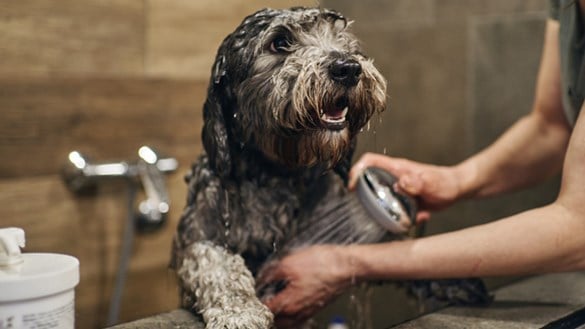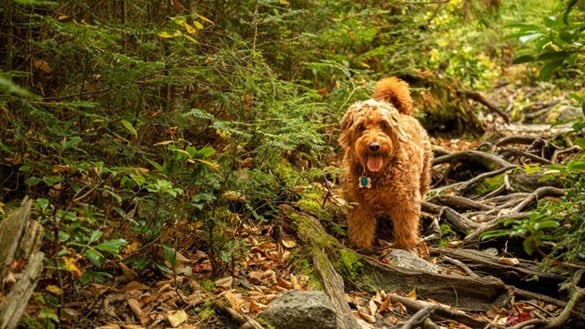Autumn Walks With Your Dog
Autumn is a great time to get back to nature with your dog. Discover our advice for safe walking with your dog this Autumn.
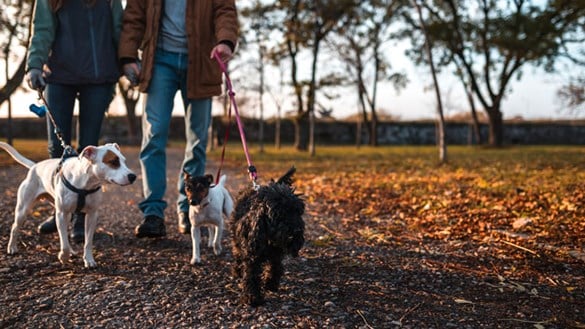
Dog walking tips
The changing colours and cooler temperatures of autumn make it a great time to enjoy long walks with your dog. Not only will they find it much more comfortable than the heat of summer, but there are also plenty of new sights and smells for them to explore.
Read on for our tips to ensure you and your dog stay safe this autumn.
Switch up your routine
As we head towards winter, the days get shorter. It’s a good idea to gradually alter your normal walking routine so that you’re not heading out in the dark. Start your morning walks later and your evening walks earlier to avoid being out before or after daylight.
This will also help your pet adjust to the changing schedule when the clocks go back, so you may want to alter your regular feeding times too.
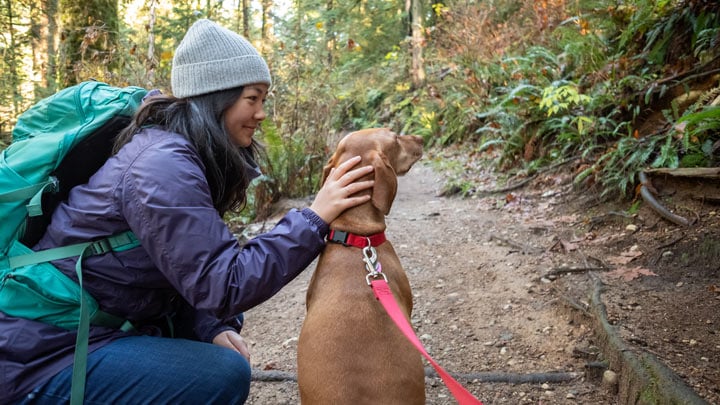
Be visible
If you do need to go for a later walk, ensure you and your dog are as visible as possible to avoid accidents. Wearing brightly coloured clothing and putting a hi-vis coat on your dog means you can both be easily spotted when crossing roads. You may want to invest in a light-up collar for your dog; these are equipped with flashing lights to make your dog impossible to miss.
While it may be tempting, never let your dog off the leash in the dark. They can be difficult to spot and easily disorientated in low visibility.
Dangers of dog walking
Watch out for lungworm
Lungworm is a parasite that can cause fatal consequences in pets. It’s often picked up from infected slugs and snails on wet, autumn walks, so always keep your dog close and don't let them rummage around out of sight. The only effective way to protect dogs against the dangers of lungworm is with regular worming treatment, so talk to your vet about ensuring their parasite control is always fully up to date.
|
More related content: |
Be aware of autumnal toxins
Unfortunately, a few autumn staples pose a risk to pets, so it’s important to keep an eye out for them on walks.
Not only can conkers block your dog’s airways, but they also contain a chemical called aesculin which can cause internal damage if eaten.
Acorns are also toxic to dogs due to the presence of tannic acid, which can cause stomach upset and diarrhoea. In severe cases, acorns can even cause internal damage and kidney disease.
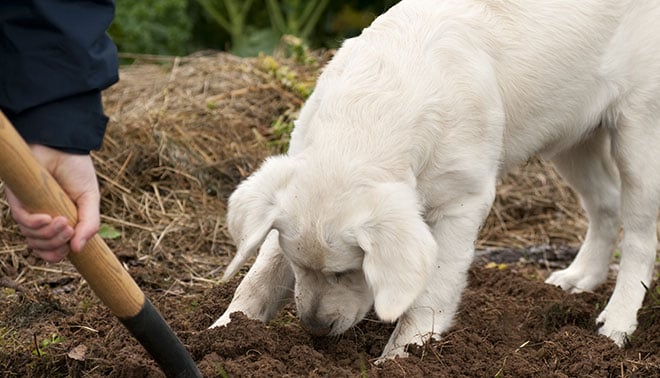
Keen gardeners often use slug pellets to kill off slimy pests, but these pellets are poisonous to dogs. They contain metaldehyde, which can cause tremors and convulsions, and are usually fatal without immediate treatment.
You should also keep a safe distance away from piles of wet leaves: they’re a perfect breeding ground for mould and bacteria, which can make your dog seriously ill.
If you think your dog has swallowed any of these autumn toxins, or if they’re showing signs of illness, contact your vet immediately.
Check our poisons guide if you're concerned about what may be toxic for your dog.
Should I clean my dog after a walk?
Spending a few minutes to clean your dog after a walk can help prevent health issues from developing.
It’s believed that Alabama rot (otherwise known as CRGV) can be picked up on wet, muddy walks. This condition causes skin ulcers to develop and ultimately leads to kidney failure, so it’s important to clean up your dog after a wet or muddy walk.
Ticks remain active throughout autumn, so giving your pet a quick once-over after a walk in grassy, wooded areas means you can spot any signs. Contact your vet if you think your dog might have a tick. Tick-transmitted diseases, such as Lyme disease, can be prevented if the tick is removed within 24 hours.
Autumn walks FAQs
You shouldn’t let your dog drink from puddles as they’re at risk from various diseases and contaminants. Puddles can contain dirt, leaves, droppings, insects, and litter, and depending on the area, chemicals such as anti-freeze. This can cause many problems such as leptospirosis, giardia, lungworm, and poisoning.
Removing a tick yourself can be tricky, as removing the body but leaving the head inside the skin will still cause problems. If possible, you should invest in a specialist tick removal tool. Wearing rubber gloves, grasp the tick very closely to the skin with the tick removal tool or and pull the tick’s body away from the skin. Avoid crushing it. After removal, clean your dog’s skin with a pet-friendly antiseptic wipe. We’d always recommend checking with a vet if you have any concerns that you haven’t removed the entire tick.
It’s not always easy spotting the signs of lungworm, but if you notice your dog coughing more, blood in the urine, vomiting blood, or pink spots on the gums, this may be a sign of lungworm and you should always take your dog to the vet immediately if you notice any of these symptoms.
Take into consideration your dog’s breed when considering whether to put a coat on them. Short-haired breeds or breeds with finer or thinner fur such as whippets, or dogs which are very young, underweight, old, or sick should wear a dog coat when it’s cold. Longer haired breeds such as huskies and German shepherds wouldn’t normally require a coat. It’s important to ensure you get the right size coat for your dog.



